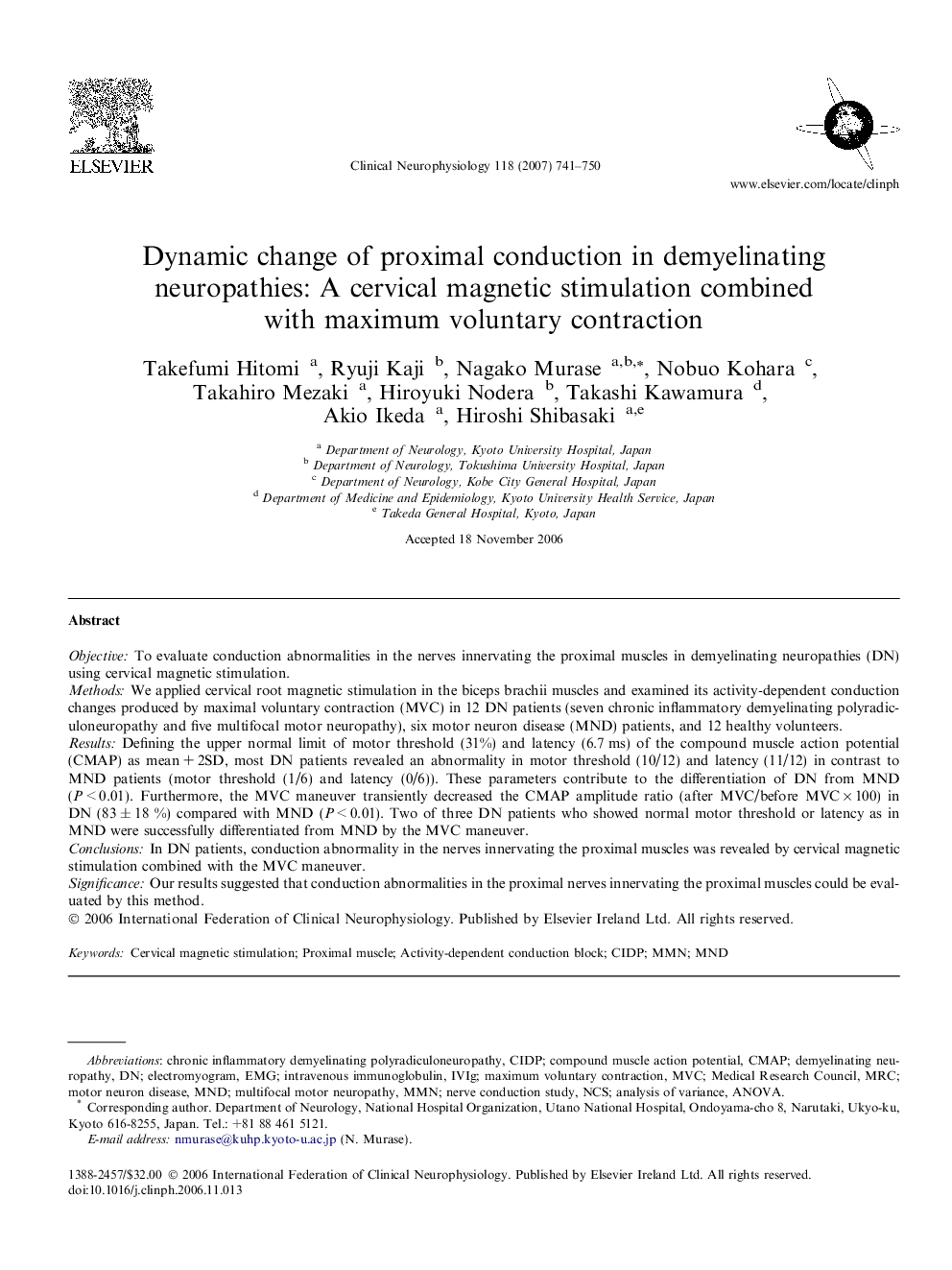| Article ID | Journal | Published Year | Pages | File Type |
|---|---|---|---|---|
| 3047901 | Clinical Neurophysiology | 2007 | 10 Pages |
ObjectiveTo evaluate conduction abnormalities in the nerves innervating the proximal muscles in demyelinating neuropathies (DN) using cervical magnetic stimulation.MethodsWe applied cervical root magnetic stimulation in the biceps brachii muscles and examined its activity-dependent conduction changes produced by maximal voluntary contraction (MVC) in 12 DN patients (seven chronic inflammatory demyelinating polyradiculoneuropathy and five multifocal motor neuropathy), six motor neuron disease (MND) patients, and 12 healthy volunteers.ResultsDefining the upper normal limit of motor threshold (31%) and latency (6.7 ms) of the compound muscle action potential (CMAP) as mean + 2SD, most DN patients revealed an abnormality in motor threshold (10/12) and latency (11/12) in contrast to MND patients (motor threshold (1/6) and latency (0/6)). These parameters contribute to the differentiation of DN from MND (P < 0.01). Furthermore, the MVC maneuver transiently decreased the CMAP amplitude ratio (after MVC/before MVC × 100) in DN (83 ± 18 %) compared with MND (P < 0.01). Two of three DN patients who showed normal motor threshold or latency as in MND were successfully differentiated from MND by the MVC maneuver.ConclusionsIn DN patients, conduction abnormality in the nerves innervating the proximal muscles was revealed by cervical magnetic stimulation combined with the MVC maneuver.SignificanceOur results suggested that conduction abnormalities in the proximal nerves innervating the proximal muscles could be evaluated by this method.
